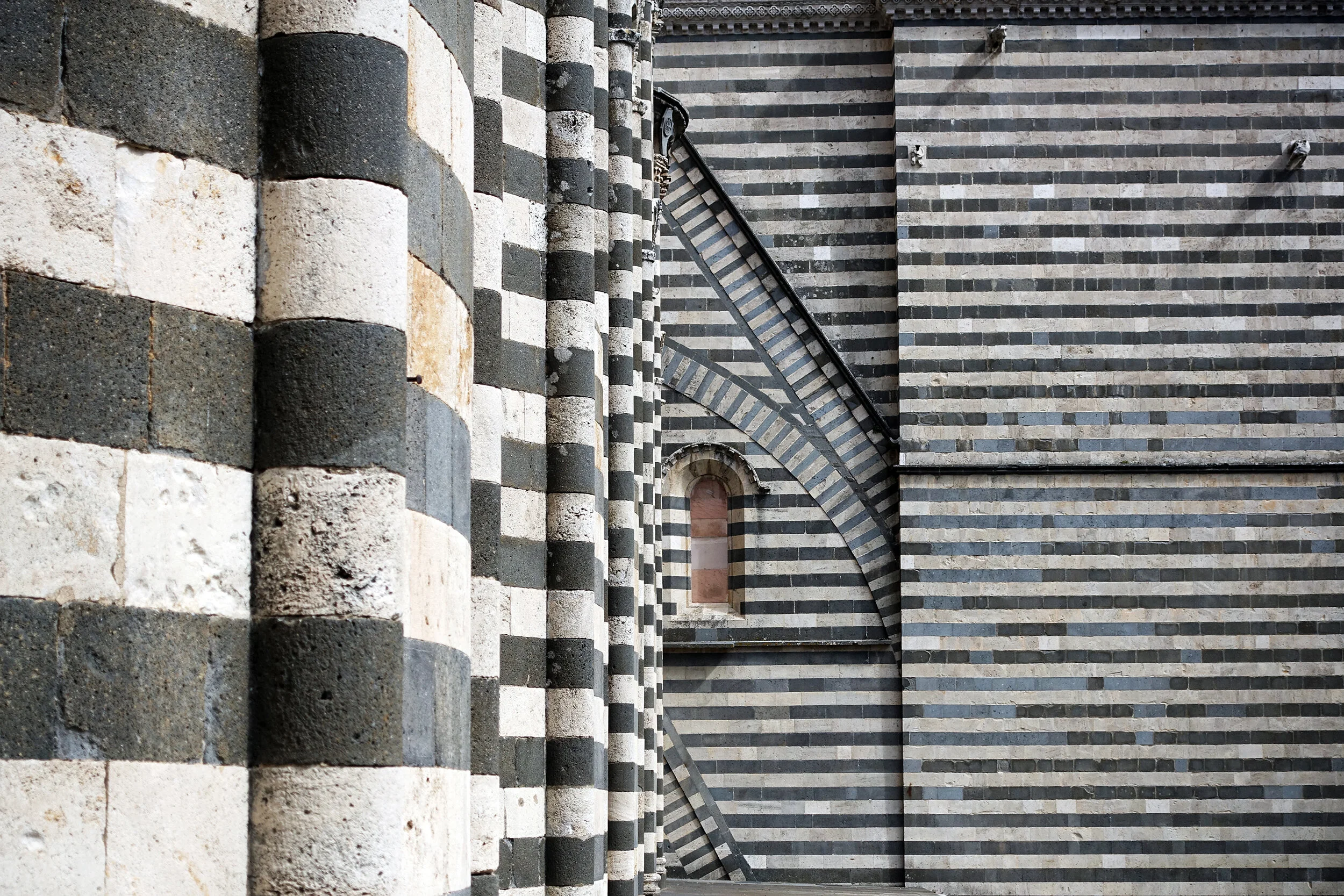
Page 7 of 10
Orvieto, Italy
Four times is once too much for luck and that's how many times the clock struck, I wandered home saying your name
Growing up, my sister had a 500 piece Springbok jigsaw puzzle called Verticalville. The idea of Verticalville was that it was this weird, cartoony stacked town, with the water tower, observatory and planes up top (which makes sense) but with a lighthouse, a roller coaster, train and hot air balloons in the middle (which makes somewhat less sense). And while it may have failed as an example of solid urban design, Verticalville did excel as a puzzle. Unlike my sister, father and his mother, I am not much of a jigsaw puzzle person, still I had helped my sister with it enough times that I would no longer need the artwork from the box to know what went where, and after a while even some of the actual puzzle piece shapes and patterns became familiar enough that the images printed on them became secondary. But in the end it was always the image and the idea that you would remember, and even as a kid I would wonder if such a place could exist. The short answer is no, but the longer, more nuanced contradictory answer (and the slideshow is always about longer, more nuanced contradictory answers) is yes, there is a Verticalville. Between Rome and Florence, close enough to see the high speed trains gliding by but never, ever stopping, is the hill town of Orvieto. A place that might not have big city excitement but makes up for it with a small town, almost Verticalville type charm.
Orvieto is in a great place to build a city, especially if you're trying to defend yourself against whatever barbarian tribes are looking for one more practice run on their way to sack Rome. There are high cliffs on all sides that make the town easy to defend, and just about every group of people who have lived in Italy since (at least) the Etruscans have lived here. Orvieto is not just an easy place to defend, it's also a great place to hide. If you were a pope in the Middle Ages who had run into some trouble, you would quickly get out of the Vatican, hide in Castelvecchio for a while, then sneak out of Rome and go somewhere that could be better defended like, say, a hill town built high up on cliffs like Orvieto. As a result of those visiting hide and go seek popes, the cathedral in this small, out of the way hill town is somewhat more impressive than you might expect. A strong, shiny facade gives way to horizontal stripes that cover both the exterior and interior. And despite my best efforts I didn't see any hiding popes inside, although maybe I just wasn't looking hard enough.
When you arrive on the local train from Rome or Florence, you arrive at the bottom of the vertical hill. Luckily right across from the street from the railway station there is a funicular (but no roller coaster) that climbs and tunnels through the volcanic cliffs to bring you right to the top of the town. Up there, several (mostly) pedestrian streets connect you to everything you want to see, but along the outside edges are parks and streets and views just like this one, where the Umbrian countryside feels close enough to touch.
Those hiding popes liked to think ahead. They realized that Orvieto was a great place to hide but maybe not that great a place to survive a long siege. All of the water came from the bottom of the hill, a problem if the Holy Roman Emperor (or more accurately the Holy Roman Emperor's army) decided to pay a visit. As a result, in the 1500s they started digging a well straight down 600 feet into the cliffs. To make it easy to bring the water up, they created interlocking dual ramps so that the donkeys going up and the donkeys going down never had to deal with each other. Now 500 years later, the asses going up and the asses going down are tourists, and what they get to see is an open well that may not make it all the way down to purgatory but instead gets you down just far enough that the light seems farther away than it probably is.
After descending 600 feet (or so) into the chilly volcanic cliffs, it was time to go overground and 150 feet (or so) into the air and to the top of the Torre del Moro, the clock tower that stands in the center of everything and only a half a block from my hotel. On the very top of the tower are bells that go off every hour and (luckily for me) only went off four times at 4pm, as opposed to sixteen times for 16.00.

